Summer days invite us to explore nature up close and in detail, including the small worlds of insects, bees and butterflies. All of these make fine topics for picture books as well, so pairing an outdoor reading time with observation and discovery can turn a plain afternoon into magic. Pack your hat, a magnifying glass, and one of more of these nonfiction books. Find a shady spot for reading and then see what you can find in its vicinity to make that book a lived experience.
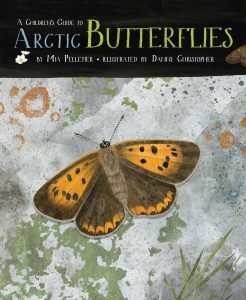 Author Mia Pelletier and illustrator Danny Christopher present the beautiful and informative A Children’s Guide to Arctic Butterflies, from Inhabit Media. Among the 20,000 butterfly species in the world, here are details about a dozen that live in the far North. Many of these species can also be found further south than the Arctic, so if you live in a cool climate, you may be able to spot some of them in your own environment.
Author Mia Pelletier and illustrator Danny Christopher present the beautiful and informative A Children’s Guide to Arctic Butterflies, from Inhabit Media. Among the 20,000 butterfly species in the world, here are details about a dozen that live in the far North. Many of these species can also be found further south than the Arctic, so if you live in a cool climate, you may be able to spot some of them in your own environment.
Hello Bugs, What Do You Do?, illustrated by Loes Botman and 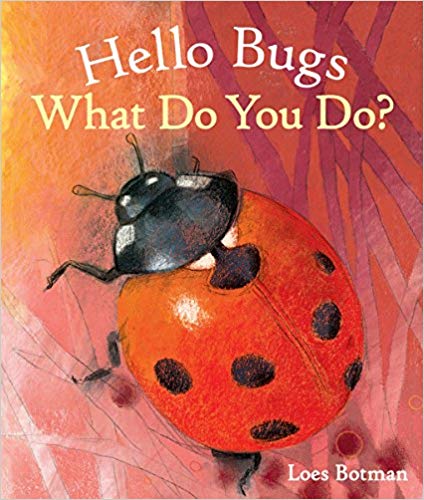 published by Floris Books, is right-sized and focused for the very youngest entomologist. A board book with 19 pages featuring closeups of common insects like ladybugs and centipedes, the vocabulary is all about bug-based activities: wiggling, crawling, nibbling, and so on. This is an easy invitation to share those activities, so pack a small snack for your outdoor story time!
published by Floris Books, is right-sized and focused for the very youngest entomologist. A board book with 19 pages featuring closeups of common insects like ladybugs and centipedes, the vocabulary is all about bug-based activities: wiggling, crawling, nibbling, and so on. This is an easy invitation to share those activities, so pack a small snack for your outdoor story time!
If you make your outdoor story and exploring time evening or very early 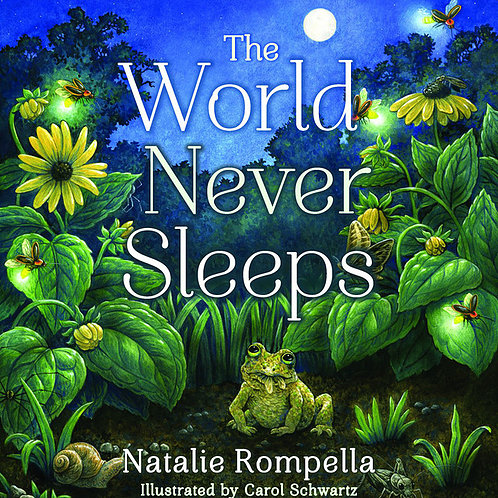 morning, take along Tilbury House Publishers’ The World Never Sleeps, by Natalie Rompella, with illustrations by Schwartz. here’s a look at all that happens across 24 hours in a small garden, including the buzzing and flapping and web spinning of the insects who live there. The painted illustrations include the suggested perspective here of a housecoat, who wanders through each spread to share what we readers can spot in the leaves and different degrees of light. Plenty of facts are included at the end of the book for those who have more questions. For more backyard science inspiration, and for slightly older readers, check out The Acadia Files, Book One: Summer, by Katie Coppens and illustrated by Holly Hatam.
morning, take along Tilbury House Publishers’ The World Never Sleeps, by Natalie Rompella, with illustrations by Schwartz. here’s a look at all that happens across 24 hours in a small garden, including the buzzing and flapping and web spinning of the insects who live there. The painted illustrations include the suggested perspective here of a housecoat, who wanders through each spread to share what we readers can spot in the leaves and different degrees of light. Plenty of facts are included at the end of the book for those who have more questions. For more backyard science inspiration, and for slightly older readers, check out The Acadia Files, Book One: Summer, by Katie Coppens and illustrated by Holly Hatam.
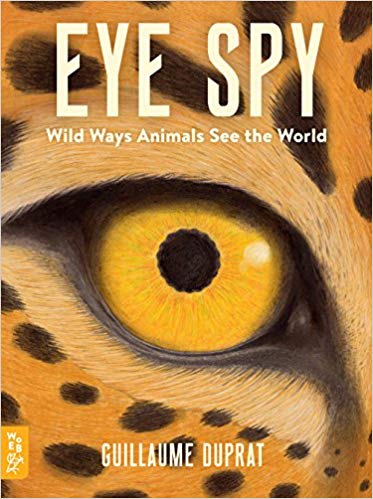
How do animals, including insects, see their own worlds? Let’s turn to What On Earth Books’ Eye Spy, by Guillaume Duprat with that question. This oversized picture book shows us how our shared world appears in the differently constructed eyes of 20 different animals, including insect eyes with their multiple lenses. There is a host of information here for budding fantasy writers as well as scientists, with much to show us all about how differently shape and color and other detail appear from one creature’s eyes to the next.
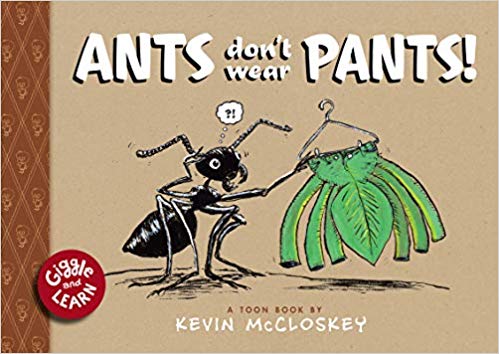
Cartoonist Kevin McCloskey continues to add to his TOON Books collection of scientifically informed graphic novels for young and beginning readers. Ants Don’t Wear Pants offers abundant facts about what they do that keeps them so busy and how the senses we share with them–like smell and touch–operate very differently in their world than in ours. This new title joins other garden story time titles from the author, including We Dig Worms and Snails Are Just My Speed.